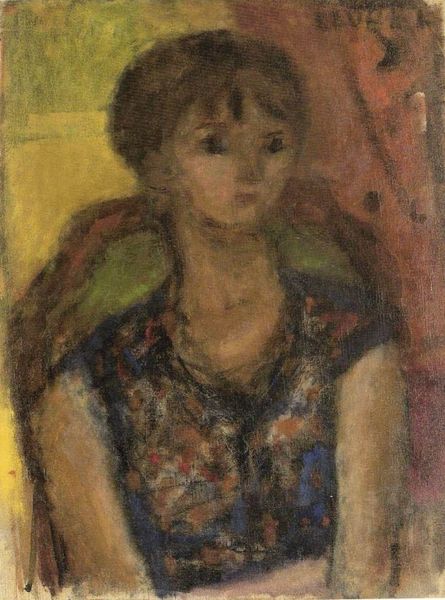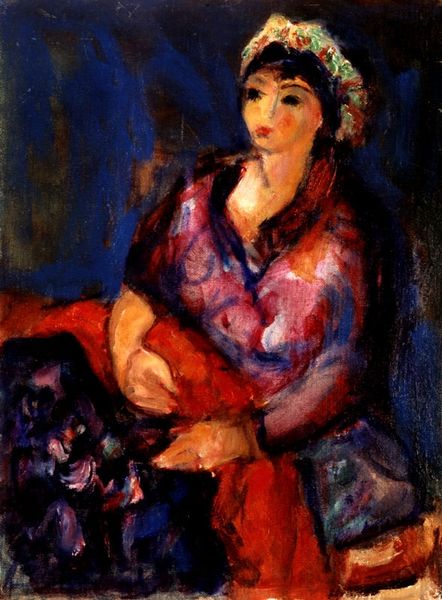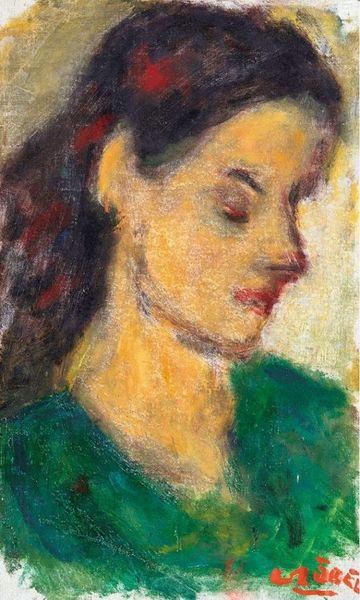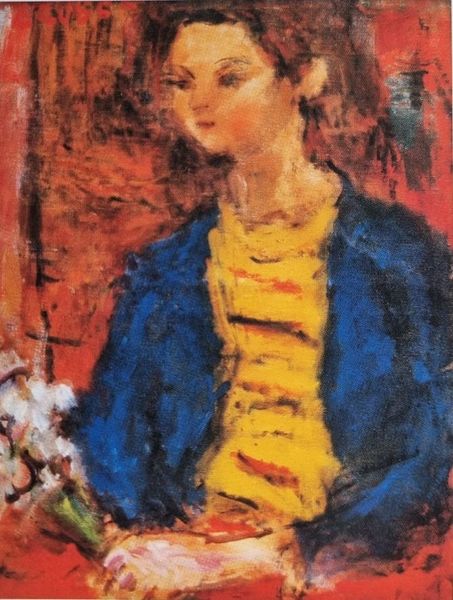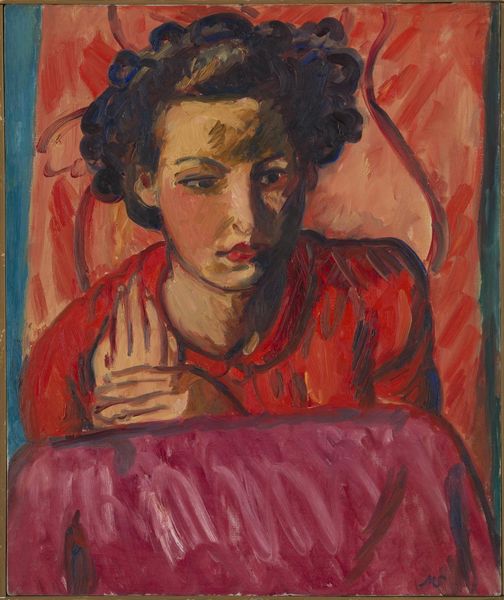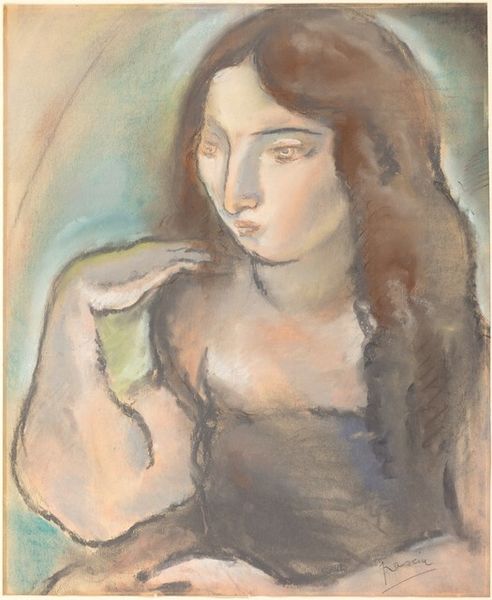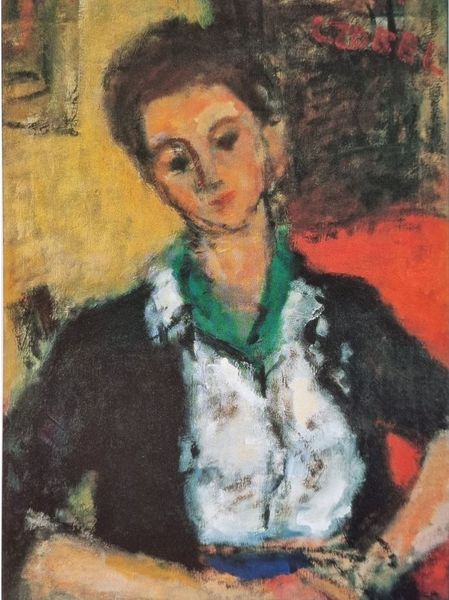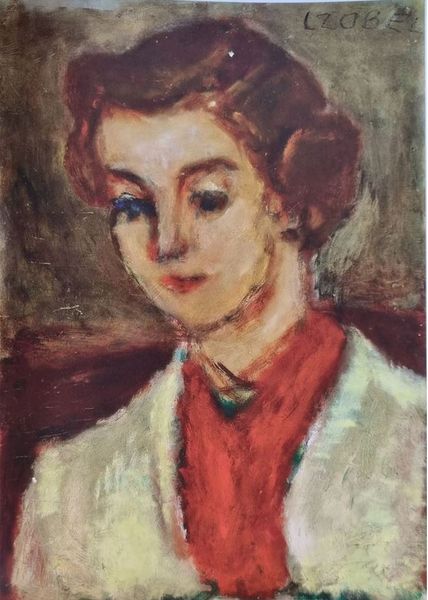
painting, oil-paint, impasto
#
portrait
#
painting
#
oil-paint
#
figuration
#
oil painting
#
impasto
#
expressionism
#
portrait art
Copyright: Bela Czobel,Fair Use
Editor: This is "Czobel Béla Fésülködő Lány," or "Béla Czóbel Combing Girl," an oil painting. It feels introspective to me, like a stolen moment of privacy. What strikes you about it? Curator: Well, immediately the expressionist style jumps out, reminding us that Czóbel, though Hungarian, spent significant time in Paris within circles of artists re-evaluating academic traditions in the early 20th century. But more broadly, portraits like these became increasingly relevant due to growing social mobility that demanded visual representation, not just for nobility but for everyday citizens. Editor: That's fascinating! So it’s not just about capturing a likeness? Curator: Precisely. It is about participating in and laying claim to modern public life. But look closer—what’s your sense of her class? Of her engagement with society? Editor: She doesn’t seem part of high society; her dress feels informal. Maybe she's an emerging middle-class woman finding her own place? Curator: Yes, that casual intimacy marks a deliberate shift. Consider how traditional portraits usually staged formality and status. Czóbel is instead depicting everyday experiences, which democratized the concept of portraiture itself, thus inviting wider public interpretation and consumption. Editor: It is amazing to realize how an image carries and delivers multiple social factors within it. It does change my initial reading. Curator: Indeed, analyzing these visual cues within the larger historical context reveals fascinating insights into the role art plays in reflecting—and shaping—social changes.
Comments
No comments
Be the first to comment and join the conversation on the ultimate creative platform.


